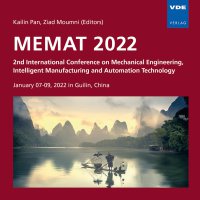Research on Numerical Simulation of Static Three-dimensional Wind Turbine Blade Icing
Conference: MEMAT 2022 - 2nd International Conference on Mechanical Engineering, Intelligent Manufacturing and Automation Technology
01/07/2022 - 01/09/2022 at Guilin, China
Proceedings: MEMAT 2022
Pages: 5Language: englishTyp: PDF
Authors:
Wang, Guoqiang; Mo, Qiuyun; Liu, Yanyan; Guo, Rongbin; Li, Le (School of Mechanical and Electrical Engineering, Guilin University of Electronic Technology, Guilin, Guangxi, China & Guangxi Key Laboratory of Manufacturing System and Advanced Manufacturing Technology, Guilin, Guangxi, China)
Abstract:
With the development of wind energy in cold regions, the issue of wind turbine blade icing has received widespread international attention in recent years. The study of wind turbine blade icing mainly focuses on the influence of twodimensional or quasi-three-dimensional airfoil icing on the flow field, ignoring the icing characteristics of the blade in the spanwise direction. In this paper, a three-dimensional wind turbine blade icing numerical model is established to supplement the blade spanwise water film flow characteristics, and the blade icing characteristics under multiple operating conditions are analyzed. The results show that the icing is mainly concentrated on the leading edge of the blade, and the icing limit along the direction of the leaf spread shows a tendency that the small middle ends are large. At -20deg C, the leading edge of the blade forms a streamlined ice similar to the airfoil profile, which has little effect on the aerodynamic performance of the blade. The protruding ice ridge at the end of the blade leads to the formation of separation bubbles, which separates the boundary layer of the blade. After icing, the drag coefficient of the blade increases by 10%, and the lift-to-drag ratio decreases from 8.55 to 7.77.


